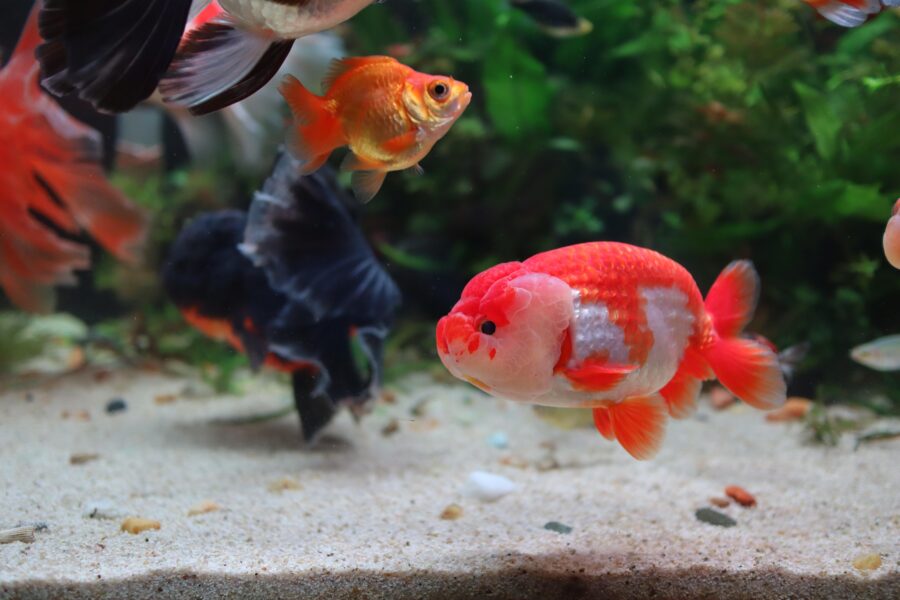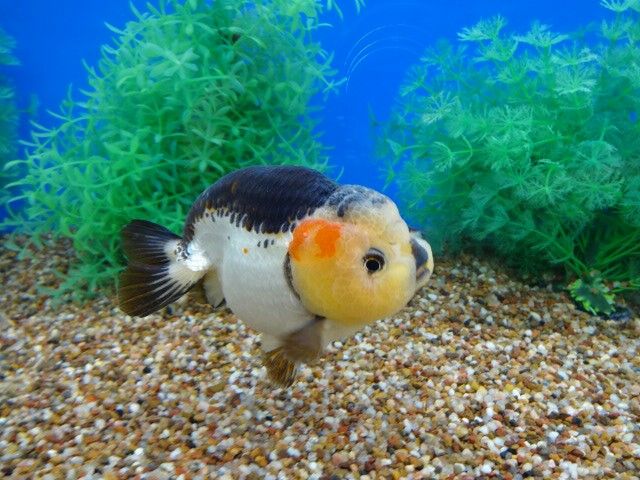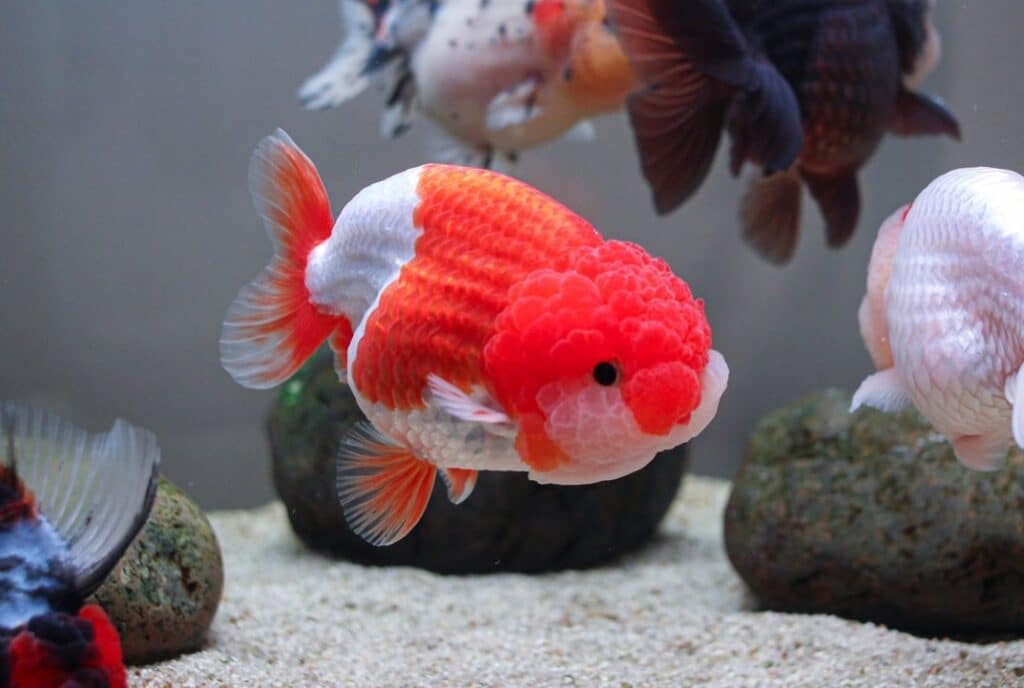
Welcome to the enigmatic realm of Goldfish Wen Growth, where things aren’t as shimmering or simple as they appear. These intriguing fish features, served up with more eccentricity than a quirky indie rock band, are a captivating facet of our cherished goldfish that demand some exploration.
Prepare yourself for a comedic ride. We’ll unravel the mystery of the ‘Wen,’ dissect its development process, and expose the astonishing reality of “You Are What You Feed” (trust us, those fish flakes aren’t as harmless as they look). Fasten your seatbelts, folks – we’re about to dive into a fishy saga of goldfish wens!
Understanding Goldfish Wens
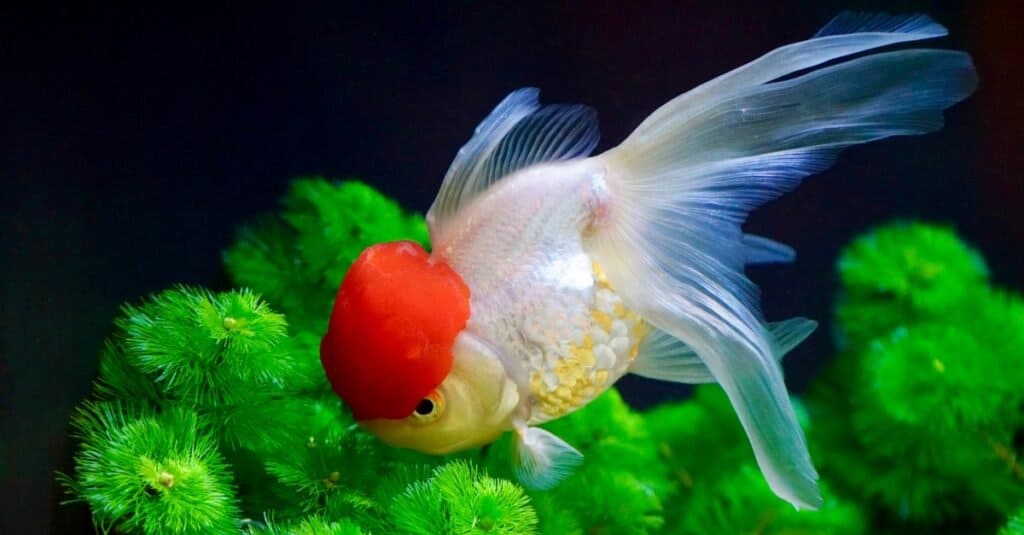
Let’s plunge into the fascinating world of fish head ornamentation. Or, in plain English, let’s talk about those bumpy things on top of your goldfish’s head. Yep, we’re talking wens!
What is a Wen?
A wen is that charming, squishy mass on the head of some breeds of goldfish. It may not win any beauty contests in the human world. But in the goldfish world, it’s the equivalent of voluminous, bouncy hair. That’s right, it’s a sign of good health and maturity.
Wen Types and Their Importance
In the goldfish fashtion world, not all wens are created equal. You’ve got your Lionhead wens, your Bubble Eye wens, and your Ranchu wens, among others. Each of these wens serves a purpose, from protecting the eyes to making the fish more buoyant. On the scale of goldfish haute couture, it’s like having a tailor-made suit — each is unique and plays different roles in a goldfish’s life and survival.
Alright, we’ve got down the basics about wens. The next lap in our swim, we’ll dive deeper into the process of wen growth. So, don your goggles, hold your breath, and let’s swim on! We’re all fin, I mean, in this together!
Goldfish Wen Growth Process
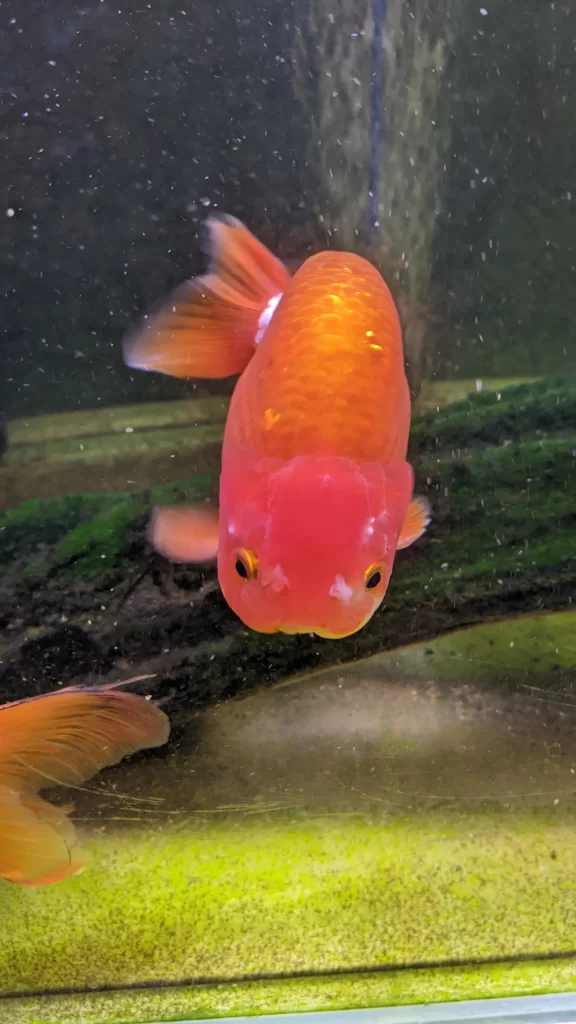
So, you’ve noticed some tiny bumps on your goldfish’s noggin and you’re wondering, “what’s up with that, fishy?” You’re now stepping into the domain of goldfish wen growth! Let’s dive in.
Factors Affecting Wen Growth
Like trying to put on muscle at the gym, wen growth depends on various factors. Genetics play a huge part. Some fish are just naturally swole in the wen region. Age matters too. Young fish, like teenagers, tend to show rapid wen growth. One more crucial factor is diet. A well-balanced fish chow helps bolster wen growth – just remember, no protein shakes required here!
Ready to surprise your goldfish with that fact? Hang on, we’ve got more to discuss about the pace of this growth.
Speed of Growth
Alas, wens don’t sprout overnight. The process can take years. Some fish develop their helmet-like wens from as young as four, while others may keep you waiting until they’re nine. It’s like waiting for a teen’s voice to break. You’re just not sure when it’s gonna happen!
Now that we’ve got the speed under our belt, let’s float to the next topic – recognizing the unhealthy wen growth.
How to Spot Unhealthy Wen Growth
Ready for some fishy diagnostics? Unhealthy wen growth is usually marked by unusual color changes, like sudden white spots that are not bubble-like pearls of wisdom from your goldfish. Your fishy friend might be irritable too, or bump into things like it’s going for the ‘Most Clumsy Goldfish’ award. If you catch any of these signs, your fish might be making a cry for help.
As we wrap up this dive into the science of wens, remember that every goldfish is unique. Some might rock a wen, others might not. The important part is to love your squishy wet friend, warts and all.
Our next port of call? What your goldfish is eating, and how it might be shaping that marvellous wen!
You are What You Feed

Ah, the joys of eating! Not just for us, but for our aquatic friends. It’s been said that “you are what you eat.” So, let’s dive into how this applies to goldfish and their wens.
Importance of Diet for Wen Growth
Your goldfish’s diet is more than a mere survival necessity. It plays a pivotal role in their overall health, and most importantly, their wen growth. Just as teenagers require proper nutrition to fuel their growth spurts, goldfish need the right food for optimal wen development.
In the quest for the perfect diet for your goldfish, it can be helpful to know the best diet foods that promote wen growth. For more insights, check out our article on the 5 Best Diet Foods for Your Goldfish. It’s a comprehensive guide that will point you in the right direction to ensure your goldfish’s wen growth is healthy and robust.
Ideal Foods for Goldfish Wens
So, what does a Michelin-starred meal look like in the goldfish world? The answer is high-quality, protein-rich food. Your goldfish’s menu should include specialty goldfish food or pellets that feature ingredients like spirulina, wheat germ, or shrimp meal. And don’t forget to toss in some fresh vegetables for a well-balanced diet!
For a more comprehensive look at goldfish nutrition, be sure to check out our article on Discover the Best Foods for Your Goldfish. It’s your go-to guide for creating a well-rounded and delicious diet that supports healthy wen growth.
Foods to Avoid
Now, onto the ‘no fly’ or in this case, ‘no swim’ list. Foods high in fats and carbs are major wen growth disruptors. Steer clear of processed food and over-feeding, because just like in humans, it can lead to obesity in fish — yes, that’s a thing.
Diet isn’t the be-all and end-all when it comes to your goldfish’s wen. But it does play a mighty role. Picking the right dietary formula is like putting together an Oscar-winning cast for a movie. With the right foods, your fish could be the Daniel Day-Lewis of the aquarium world!
But are there other factors? Of course! Next, we’ll explore how your goldfish’s habitat impacts their wen growth. Stay tuned!
The Impact of Habitat

We’ve all heard the phrase “home is where the heart is.” Well, in the world of goldfish, home is where the wen thrives. Or doesn’t. Truth be told, a goldfish’s habitat can significantly impact its wen growth. So let’s dive into what makes the ideal tank setup for our bubbly buddies.
The Ideal Goldfish Tank Setup
Size truly does make a difference! Contrary to childhood beliefs, setting Goldie free in a toilet bowl isn’t the thrilling marine adventure you thought it was. Goldfish crave room to roam, and a small bowl isn’t their idea of luxury. At a minimum, opt for a tank that boasts a capacity of 20 gallons to give your goldfish ample swimming space.
Moreover, think of the water temperature as the ambiance of a room. A thermostat that stays between 65F and 75F is just right – think of it as the cozy warmth of lukewarm potato salad – ideal for fostering healthy wen growth.
Additionally, everyone needs a little privacy now and then, and goldfish are no exception. Introduce a few fake caves or plants, and you’ll quickly see them indulging in their own version of hide and seek.
If you’re keen to deep dive into tank specifics, our article The Right Tank Size for Your Goldfish is a treasure trove of information. And if you’re on the lookout for plants to spruce up their living space, don’t miss 10 Best Live Plants for a Goldfish Aquarium for the green thumb guidance.
How Water Quality Affects Goldfish Wen Growth
We wouldn’t enjoy living in a garbage dump, and neither do our fishy friends. Poor water conditions can stunt wen growth and lead to all sorts of health issues. Say NO to Dirty Tank Syndrome, folks!
Maintaining the cleanliness of your tank is like ensuring your goldfish is always bathing in Evian. Contaminants such as ammonia, nitrites, and nitrates are a no-no, so regular water changes and filter maintenance should be high on your fish parenting to-do list. Also, remember that overfeeding can dirty the water quickly, like dropping a tub of guacamole in a hot tub. (Yes, totally gross. So don’t do that to your goldfish.)
After soaking up the info on optimal tank setup and water quality for healthy wen growth, you now know the importance of a good habitat for your goldfish. On the flip side, no amount of tank tinkering will help if there are problems with your goldfish’s wen. Give us a moment to shift gears, and we’ll dive into identifying wen problems in the next section. Time to slap on our detective caps!
Goldfish Wen Growth Health and Maintenance

Let’s deep dive into the meaty wen subjects: identifying issues, to trim or not to trim, and possible prevention methods.
Identifying Wen Problems
Spotting a wen issue is crucial. If you see redness, swelling, or any abnormal behavior, there might be a problem. Sometimes, a fish might not even swim properly if it’s experiencing wen troubles.
You might be asking, “Well, how do I know if my fish isn’t swimming properly?” Great question! Behaviors to watch out for include- swimming upside down, struggling to maintain balanced movement, or bumping into things consistently. You know, the fishy version of walking into a glass door!
Wen Trimming – Is It Necessary?
Now let’s tackle a huge question: Wen trimming, necessary or pure fish fashion? Wen trimming is indeed a thing. But proceed with caution! It’s like giving your goldfish a little haircut when their wen starts blocking their eyesight. Trust us, nobody wants to swim around bumping into things!
This process, however, should be handled by an expert, so don’t try this at home, folks! Remember, we’re talking about a real, live goldfish, not a bonsai tree. It’s far more wiggly, and sadly doesn’t look great with tiny Christmas lights!
Preventing Wen Issues
You’ll want to minimize future wen problems as much as possible. Regular check-ups and maintaining a clean environment definitely help. Also, a balanced diet can help your fish’s wen stay healthy. Consider maintaining your fish’s diet like you would your car – the right amount of fuel and regular oil changes are essential!
The health and appearance of a goldfish’s wen are a reflection of the overall health and well-being of the fish. By paying close attention to the health of the wen, you can catch potential issues early and prevent long-term complications. By ensuring a clean environment, regular check-ups, and a balanced diet, you can keep your goldfish and its wen in optimal condition.
Having come full circle about wens and their mysteries, isn’t it interesting how these fishy bumps turn into such a topic? Now you’re armed with the knowledge to ensure your goldfish’s wen grows well and stays healthy. If you’re interested in learning more about how to maintain a healthy environment for your goldfish, check out our article on The Complete Guide to Aquarium Maintenance.
Remember, keeping your fish’s habitat clean and balanced is just as crucial as a proper diet. By following the guidelines in the linked article, you can provide your goldfish with a comfortable and healthy environment where its wen can thrive.
Wrap Up
To round up, goldfish wens are critical to the ornamental charm of your pet. They depend on several factors – genetic and external. The rate of wen growth is influenced by factors like diet and water quality. An unhealthy wen growth can be a sign of poor care, so it’s crucial to be on the lookout for it.
The importance of the goldfish’s diet in the growth and health of their wen cannot be overstated. Also, maintain an ideal tank set-up, and ensure good water quality. Maintenance of wen health involves recognizing problems early and addressing them, of which trimming could be necessary. Prevention, as always, is better than cure.
Frequently Asked Questions (FAQ)
Question: What exactly is a goldfish wen?
Answer: A wen is a fleshy, bumpy growth on a goldfish’s head, commonly seen in breeds like Orandas and Lionheads. They contribute to the unique look of these types but have no known functional purpose.
Question: How does the diet affect my goldfish’s wen growth?
Answer: Goldfishes’ diet significantly influences their wen growth. Nutritious, high-protein foods promote healthy wen development, while foods high in fillers can stunt wen growth or cause health issues.
Question: What are the signs of unhealthy wen growth in my goldfish?
Answer: Unhealthy wen growth might be uneven, unusually slow, or accompanied by redness, inflammation, or wen discolouration. In such cases, it’s best to consult a vet or expert aquarist.
Question: Why doesn’t my goldfish have a wen?
Answer: Not all goldfish breeds develop wens. Only specific types, like Orandas, Lionheads, and Ranchus, have this distinctive feature.
Question: Should I trim my goldfish’s wen?
Answer: Wen trimming should only be done when the wen growth begins impairing the goldfish’s vision or eating. It’s a delicate process best left to professionals, as improper wen trimming can cause harm to your goldfish.
Question: What are the ideal conditions for a goldfish tank to promote healthy wen growth?
Answer: An ideal condition includes a spacious tank with clean, filtered water, an amicable temperature between 65-75°F (18-24°C), and minimal stress factors— including overfeeding and overcrowding.
Question: How can I prevent wen issues for my goldfish?
Answer: Regular water changes, feeding a healthy, balanced diet, and monitoring your goldfish for any unusual behaviour or signs of discomfort can help prevent wen issues. If you notice any problems, consult an expert.


